Mini reviews
Talvisota muiden silmin [The Winter War through the eyes of others]
11 December 2009 | Mini reviews, Reviews
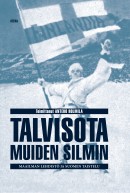 Talvisota muiden silmin. Maailman lehdistö ja Suomen taistelu
Talvisota muiden silmin. Maailman lehdistö ja Suomen taistelu
[The Winter War through the eyes of others. The world press and Finland’s battle]
Toim. [Edited by] Antero Holmila
Jyväskylä: Atena, 2009. 237 p., ill.
ISBN 978-951-796-589-7
€ 36, hardback
November 2009 marks the 70th anniversary of the outbreak of the Winter War in Finland. Based on extensive archival research, this book traces discourses (media, private diaries) about this war in various countries: the Soviet Union, Sweden, Germany, Italy, Greece, Britain, France, Hungary, Japan, the United States and the United Kingdom. Japan’s favourable image of Finland arose from its own vehement opposition to Communism. Under the right-wing dictatorship in Greece, the Winter War provided an opportunity to emphasise the importance of a unified nation to safeguard the existence of its people. Britain expressed both moral support for Finland and doubt concerning the truth of news reports. In Finland, the view was repeatedly put forward that the Winter War would unite global opinion behind Finland against the Soviet Union. The essays in this book show that attitudes were varied, with a wide range of critical voices.
Vesa Karonen & Panu Rajala: Yrjö Jylhä, talvisodan runoilija [Yrjö Jylhä, poet of the Winter War]
11 December 2009 | Mini reviews, Reviews
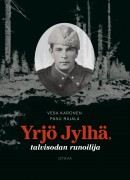 Yrjö Jylhä, talvisodan runoilija
Yrjö Jylhä, talvisodan runoilija
[Yrjö Jylhä, poet of the Winter War]
Helsinki: Otava, 2009. 351 p., ill.
ISBN 978-951-1-23840-9
€ 35, hardback
Yrjö Jylhä (1903–1957) was a poet and translator whose collection of poems entitled Kiirastuli (‘Purgatory’), published in 1941 after the Winter War, is one of the most popular works of Finnish verse. Jylhä served as commander of a Karelian army company during the Winter War. A certain sternness, melancholy and pessimism about life are considered to be characteristic of Jylhä’s writing. The author of this book, the first biography of Jylhä, had access to new source materials including letters written from the front. The war meant not only great change for Jylhä as a writer, but also a test of his own limits as a leader and a soldier among other men. After the war, Jylhä’s reputation began to wane – partly for political reasons, as people took a more dismissive attitude towards war poetry about the Finnish fatherland. Jylhä suffered from a serious illness and artistic frustration in his middle age, which led him to take his own life.
Jorma Luhta: Tähtiyöt [Starry nights]
20 November 2009 | Mini reviews, Reviews
 Tähtiyöt
Tähtiyöt
[Starry nights]
Helsinki: Maahenki, 2009. 84 p., ill.
ISBN 978-952-5652-75-8
€ 41, hardback
Jorma Luhta (born 1951) is an award-winning Finnish nature photographer and author. The subject material of this book is night-time in the forests of northern Finland, illuminated by the stars and the Northern Lights. The problem of light pollution means that even in sparsely populated Lapland the lights from population centres can hamper the view over a radius of two hundred kilometres. Jorma Luhta’s photographs are the result of many years of dogged effort. The most impressive images of all were taken on the coldest night in a century: temperatures fell to around –50 °C. It takes split-second precision to achieve the greatest shots, such as when Luhta’s camera records a sheet of Aurora Borealis resembling Picasso’s white dove of peace (above). In his lyrical text Luhta, a night-time walker in the woods, observes his natural surroundings and contemplates such matters as his fear of the dark and feelings of isolation.
Suomalaiset pappilat [Finnish parsonages]
20 November 2009 | Mini reviews, Reviews
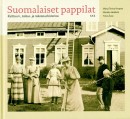 Marja-Terttu Knapas & Markku Heikkilä & Timo Qvist
Marja-Terttu Knapas & Markku Heikkilä & Timo Qvist
Suomalaiset pappilat. Kulttuuri-, talous- rakennushistoriaa
[Finnish parsonages. A cultural, economic and architectural history]
Picture research: Sirkku Dölle
Helsinki: the Finnish Literature Society, 2009. 231 p., ill.
ISBN 978-952-222-096-7
€48, hardback
From the Enlightenment period in the 18th century up until the 20th century, Lutheran parsonages played a significant role in Finland as centres of worldly life and propagators of culture and civilisation. Influential figures in many walks of life spent their childhoods in parsonages, and the parsonages themselves served as influences on the built environment of their surroundings. They began to be taken out of active use at an accelerating rate over the course of the 20th century. This book sets out to portray parsonages with interesting personal and social history and architecture. It also creates a narrative of the milieu and family networks of clergymen and their families – an institution that gradually began to break down in Finland after the Second World War. The portrayal of life in the parsonages is closely linked to the broader themes of agriculture, gardening and food. Illustrations from the collections of Finland’s National Board of Antiquities are supplemented by photographs from other museums as well as individuals.
Monika Fagerholm: Glitterscenen [The Glitter Scene]
17 November 2009 | Mini reviews, Reviews
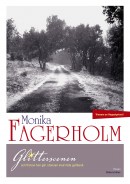 Glitterscenen
Glitterscenen
[The Glitter Scene]
Helsingfors: Söderströms, 2009. 407p.
ISBN 978-951-522-467-5
€29.90
Säihkenäyttämö
Finnish translation by Liisa Ryömä
Helsinki: Teos, 2009. 455 p.
ISBN 978-951-851-127-7
€29.90, hardback
In Glitterscenen Fagerholm reveals the shabby details of the murder mystery that was the essence of her celebrated Den amerikanska flickan, The American Girl (2006). In a sense, the two books are psychological thrillers, but they are also much more than that: the American girl’s death is a myth about destruction and creation – a narrative about love, death and glamour that attracts and seduces cohort after cohort of young women in the District, a place somewhere in Finland that is in the process of being transformed from the rural to the suburban. Like no other author, Fagerholm combines the advantages of plot-based realism with the deep psychological excavation of collective dreams and the secret layers of the unconscious. In the centre of the District there is a kiosk where the local priest’s daughter, fat May-Gun, presides over dirty magazines, sickly candy and magnificent dreams. Across the square, eyed by horny small-town greasers, walks young and blonde Suzette. The result is a deadly drama, propelled by grief and narcissism. The Glitter Scene is the goal of our dreams, but also a dangerous place of instant gratification and sudden death.
Tuomas Kyrö: 700 grammaa [700 grams]
12 November 2009 | Mini reviews, Reviews
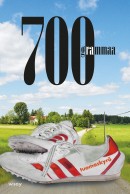 700 grammaa
700 grammaa
[700 grams]
Helsinki: WSOY, 2009. 379 p.
ISBN 978-951-0-35601-2
€ 30, hardback
The genre of the picaresque novel is doing well, and one of its foremost exponents in Finland is Tuomas Kyrö (born 1974). The plot of his ingenious first novel, Nahkatakki (‘Leather jacket’, 2001), revolved around a jacket that moves from one owner to another. His later novels maintain this comical tension, but with a deepening of themes and a more sober outlook. Liitto (‘Union’, 2005) portrayed people scarred by war, while Benjamin Kivi (2007, featured in Books from Finland 4/2007) retold Finland’s history in a light-hearted and anachronistic manner. 700 grammaa is a book about sports fever and family relationships, the exploration of love and the pursuit of dreams. The main character is a boy who at birth weighs only 700 grams, and whose father vows to perform a seven metre long-jump if his son survives. He does, and the father has to devote his life to this almost impossible sporting achievement This novel, with its fast-developing plot and varied narrative techniques, is a paean to the heroism latent in mediocrity.
Jaakko Heinimäki & Juha Metso: Miina – Äkkijyrkkä
6 November 2009 | Mini reviews, Reviews
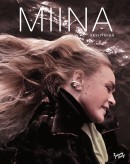 Miina – Äkkijyrkkä
Miina – Äkkijyrkkä
Text: Jaakko Heinimäki
Photos: Juha Metso
Helsinki: Johnny Kniga Kustannus, 2009. 190 p., ill.
ISBN 978.951-0-35552-7
€41, hardback
Miina Äkkijyrkkä (born 1949; real name Riitta Loiva) is a Finnish artist known for her cattle-themed paintings and sculptures. Äkkijyrkkä is also widely known as a passionate supporter and breeder of Eastern Finncattle, an endangered breed native to Finland. Most of the accompanying texts in this book which describe her ideas and her art come from a series of discussions with author and Lutheran minister, writer Jaakko Heinimäki, recorded in the spring of 2009. Miina Äkkijyrkkä speaks openly about her art and the diverse phases of her life, her values and faith, and her clashes with the authorities and the rest of society. This book is magnificently illustrated with Juha Metso’s photographs, which were taken over a period of 15 years in Finland and abroad. More information about the artist and her works is available here.
Hannele Klemettilä: Keskiajan julmuus [Medieval cruelty]
6 November 2009 | Mini reviews, Reviews
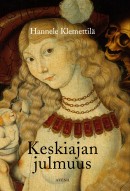 Keskiajan julmuus
Keskiajan julmuus
[Medieval cruelty]
Jyväskylä: Atena, 2008. 365 p., ill.
ISBN 978-951-796-517-0
€ 34, hardback
Darkness, cruelty, violence and ignorance are characteristics commonly associated with the medieval era. This book aims to show that this type of thinking contains a number of myths and misconceptions that have arisen in both scholarly and popular culture. She investigates how cruelty arose in medieval culture and society and how it was understood, as well as its antitheses: sympathy, fraternity and mercy. The focus of this study is from the 13th century to the first half of the 16th century. The author has relied on writings, art, folk tales and documentary sources from theoreticians, chroniclers and poets in her study. Particular attention is paid to those groups who represented the ‘non-human’ in medieval thinking, such as women and children, the infirm, common people and animals. This book also outlines a broader chronological perspective in its subject matter and addresses the issue of when the medieval era was labelled as being cruel and why that label has stuck. Hannele Klemettilä, a post-doctoral researcher at the Finnish Academy, is a cultural historian.
Teemu Kaskinen: Sinulle, yö [To you, the night]
29 October 2009 | Mini reviews, Reviews
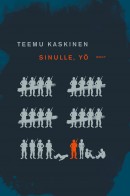 Sinulle, yö
Sinulle, yö
[To you, the night]
Helsinki: WSOY, 2009. 268 p.
ISBN 978-951-0-35599-2
€ 29, hardback
In Teemu Kaskinen’s debut novel, Finland is at war with Norway and its NATO ally the United States. Fierce battles rage in the winter darkness in Lapland, and Helsinki has become the stage for a contemporary war, which seems rather ridiculous – except for the fact that there are neighbouring countries currently at war with each other after having previously coexisted peacefully for ages, and it would be easy to name several thriving cities whose streets have suddenly been filled with soldiers, bomb blasts and terror. In this novel by Kaskinen (born in 1976; he has previously written four plays) the streets and interiors are also filled with lust and the satisfaction of basic needs. In cool, modernistic episodes, the author shows how people’s instincts begin to drag them along in a crisis situation. Sinulle, yö is a grotesque, brutal novel – but then again, what would happen if you, I and the neighbour’s lad ended up in similar circumstances, like those that engulfed Sarajevo not all that long ago?
Jari Tervo: Koljatti [Goliath]
23 October 2009 | Mini reviews, Reviews
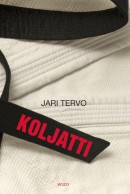 Koljatti
Koljatti
[Goliath]
Helsinki: WSOY, 2009. 317 p.
ISBN 978-951-0-35610-4
25 €, hardback
Jari Tervo (born 1959) writes comic, swiftly paced, linguistically accomplished prose with touches of historicism, philosophy and social commentary. Koljatti is a contemporary satire that prompted a great deal of fuss in the Finnish press for its perceived nastiness: the similarities between its character Pekka Lahnanen, an isolated and beleaguered prime minister, and Matti Vanhanen, the current Finnish Prime Minister, are clear. This novel outlines some crude caricatures, but its critical barbs are aimed not at politics, but rather at the relationship between the media and politics. This book, which describes the events of a single fast-paced weekend, portrays politics as theatre, in which the only thing that matters is how things appear; the media will drop any substantive questions in their relentless pursuit of new sensationalist headlines of politicians’ private lives. The news may not look the same after reading this novel. Tervo is one of Finland’s most popular authors; three of his novels have appeared in translation, in four languages. [Read a short story here.]
Kjell Westö: Gå inte ensam ut i natten [Don’t go out into the night alone]
23 October 2009 | Mini reviews, Reviews
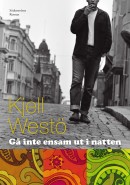 Gå inte ensam ut i natten
Gå inte ensam ut i natten
[Don’t go out into the night alone]
Helsinki: Söderströms, 2009. 604 p.
ISBN 978-951-52-2609-9
25 €, hardback
Finnish translation (by Katriina Savolainen): Älä käy yöhön yksin
Helsinki: Otava, 2009. 604 p.
ISBN 978-951-1-23833-1
25 €, hardback
This novel completes Kjell Westö’s Helsinki series and is his tenth book. As is the case with the three earlier books in this series (Drakarna över Helsingfors [‘The kites over Helsinki’], 1994, Vådan av att vara Skrake [‘The perils of being a Skrake’], 2000, and Där vi en gång gått [‘Where we once walked’], 2006, all also translated into Finnish) this is a character-driven, nostalgia-laden story that spans several decades. The central factor is music: in the 1960s three young people from different backgrounds become friends and record a single that ought to have been a huge hit, but because the song fades into obscurity, the circle of friends breaks up. In the latter part of the novel, a young man begins to investigate what became of the members of the trio and realises that his own life is linked to theirs. Westö (born 1961) writes remarkable experiential prose that brings the reader close to the characters. The retro setting may be a bit much for some: the avalanche of details feels rather excessive in places. Där vi en gång gått was awarded the Finlandia Prize in 2006. Another of Westö’s novels, Lang (2002), was published in England under the same title in 2005.
Kari Hotakainen: Ihmisen osa [The human lot]
9 October 2009 | Mini reviews, Reviews
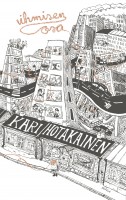 Ihmisen osa
Ihmisen osa
[The human lot]
Helsinki: Siltala, 2009. 276 p.
ISBN 978-952-234-021-4
30 €, hardback
Kari Hotakainen (born 1957) is one of Finland’s most internationally successful contemporary authors, and is widely known for his children’s books, plays and television screenplays. Like many of Hotakainen’s other works, Ihmisen osa is a contemporary novel, but it is one that sees the author being angrier and more ferocious than before; this is a story that will move readers and make them laugh. Its plot gets off to a slightly ungainly start: an impatient writer wants to ‘buy someone’s life’ for the purpose of turning it into material for a novel and is prepared to pay an elderly widow €7,000 for hers. A former yarn-seller tells him all about her life as she remembers it, and the writer writes it up into his own book – the husband’s wilful silence, a serious accident suffered by one of the three children, gradually being revealed. Having got the beginning out of the way, Hotakainen then puts his foot on the gas: in his laconic style he throws light on the conditions at the edges of contemporary working life: the business of selling images, selfishness and greed, the power of words. The yarn-seller writes to one of her children: ‘Don’t rise above your station. There’s no air up there, and you’ll get dizzy.’ Hotakainen’s novel Juoksuhaudantie (‘Trench Road’) was awarded the Finlandia Prize for Fiction in 2002. It has been translated into 17 languages and was awarded the Nordic Council’s Literature Prize in 2004.
Armas Järnefelt. Kahden maan mestari [Armas Järnefelt. Maestro of two countries]
2 October 2009 | Mini reviews, Reviews
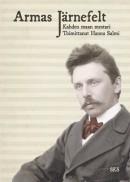 Armas Järnefelt. Kahden maan mestari
Armas Järnefelt. Kahden maan mestari
[Armas Järnefelt. Maestro of two countries]
Toim. [Ed. by] Hannu Salmi
Helsinki: Suomalaisen Kirjallisuuden Seura, 2009. 438 p., ill.
ISBN 978-952-222-057-8
€ 35, hardback
The conductor and composer Armas Järnefelt (1868–1959) was a member of one of Finland’s most prominent cultural families. His sister Aino was married to the composer Jean Sibelius. From 1905 he was the conductor of the Royal Opera in Stockholm and became a Swedish citizen. In the 1930s Järnefelt served as the artistic director and conductor of the Finnish Opera, forerunner of today’s Finnish National Opera. This book covers the various stages of his life and surveys the background to his compositions, with input from a number of Finnish music experts. Järnefelt, as a composer of beautiful melodies, was a part of the National Romantic tradition; his best-known piece, Berceuse (1904), is familiar to listeners around the world in many adaptations. Influences from Richard Wagner and Jean Sibelius are often seen in Järnefelt’s works. This book provides a more complete artistic portrait of Järnefelt than the rather superficial coverage previously available. Prior to the publication of this book, the committee responsible for the editorial work was incorporated as a society dedicated to Armas Järnefelt and has released musical scores, recordings and performances of Järnefelt’s works.
Kimmo Oksanen: Kerjäläisten valtakunta [Kingdom of beggars]
24 September 2009 | Mini reviews, Reviews
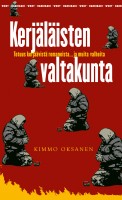 Kimmo Oksanen: Kerjäläisten valtakunta.Totuus kerjäävistä romaneista ja muita valheita
Kimmo Oksanen: Kerjäläisten valtakunta.Totuus kerjäävistä romaneista ja muita valheita
[Kingdom of beggars. The truth about Roma beggars, and other lies]
Helsinki: WSOY, 2009. 214 p.
ISBN 978-951-0-35778-1
€ 15, paperback
After Romania and Bulgaria had joined the European Union in 2007, a small group of Roma beggars from Romania arrived in Helsinki. This was a sight that was familiar to Finns on their travels abroad, but alien to them in the environment of their own city. Begging is not a crime in Finland, but the phenomenon caused a great stir in the media and, eventually, among political decision-makers. This polemic by journalist Kimmo Oksanen gives a face to the beggars and reveals many factors behind begging, as well as experiences of poverty and discrimination. Oksanen observed the beggars on the streets daily and travelled to their home villages to investigate their backgrounds. Roma criminal activity indisputably occurs elsewhere in Europe, but Oksanen maintains that there is no evidence that organised crime has arrived in Finland. The beggars are nevertheless objects of fear as well as racist attitudes.
Esko Rahikainen: Impivaaran kaski [The burnt clearing at Impivaara]
24 September 2009 | Mini reviews, Reviews
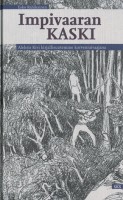 Impivaaran kaski. Aleksis Kivi kirjallisuutemme tienraivaajana
Impivaaran kaski. Aleksis Kivi kirjallisuutemme tienraivaajana
The burnt clearing at Impivaara. Aleksis Kivi as trailblazer of Finnish literature.
Helsinki: Suomalaisen Kirjallisuuden Seura, 2009. 270 p., ill.
ISBN 978-952-222-107-0
€ 29, hardback
This year marks the 175th anniversary of the birth of Finnish national author Aleksis Kivi (1834–1872). His work as a creator and cultivator of the Finnish language and literature was truly pioneering. Impivaaran kaski (the title refers to his major work, the novel Seitsemän veljestä, Seven Brothers, 1870) deals with the social conditions surrounding the creation of his works and examines their critical reception. Divisive literary disputes raged, and it was not until the second decade of the 20th century that Kivi’s status came to be acknowledged more widely. Esko Rahikainen – a librarian at the National Library and the author of several books on the life and works of Kivi – has utilised new sources to investigate the criticism and marketing of Kivi, as well as readers’ experiences and the use of his works in Finnish education.
